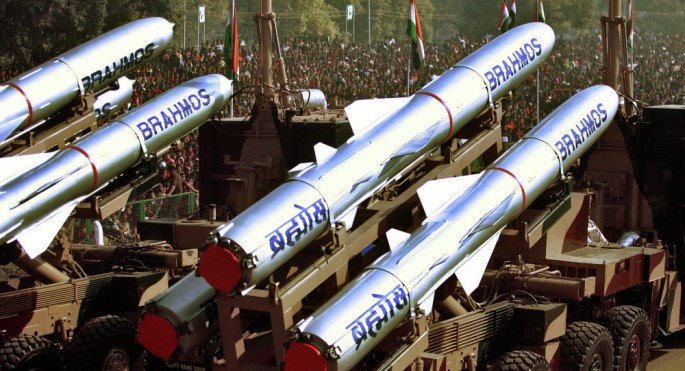China has warned India of countermeasure in response to India's decision to deploy the BrahMos supersonic cruise missile to the now more volatile Arunachal Pradesh state.
The People's Liberation Army Daily (PLA Daily), the official newspaper of the PLA and a de facto government mouthpiece, said in a commentary that apart from provoking countermeasures from China, the deployment will increase competitiveness and confrontation in Sino-Indian relations and bring a negative influence to stability of the region.
"India deploying supersonic missiles on the border has exceeded its own needs for self-defense and poses a serious threat to China's Tibet and Yunnan provinces," said the commentary.
India will deploy an Indian Army BrahMos regiment operating the latest Block III version of this potent supersonic cruise missile to defend Arunachal Pradesh, which China claims belongs to it as South Tibet.
India reported a huge build-up of Chinese military forces all along the 4,057 kilometer Line of Actual Control (LAC). Arunachal Pradesh is the most northerly state along the LAC and one of the most threatened by China.
To be stationed at Arunachal Pradesh will be the 864 Regiment of the Indian Army's 41st Artillery Division. The regiment will operate five BrahMos batteries each consisting of five Mobile Autonomous Launchers (MALs) mounted on 12 x 12 heavy-duty trucks. The regiment will command up to 100 BrahMos Block III cruise missiles, each armed with a 290 kg warhead.
The commentary argued that the deployment of BrahMos along with India's other military moves to strengthen its forces such as deploying aerial drones and Sukhoi Su-30MKIs on an airfield just 100 km from the border, intend to deter China and "create a military advantage in the boundary."
It also claims BrahMos could threaten some of the military infrastructure China has built and is building on its side of the border.
The fire-and-forget BrahMos Block III, the newest iteration of this feared weapon, possesses unique trajectory maneuver and steep-dive capabilities that allow it to hit targets behind the reverse sides of mountains. It can steep dive up to 75 degrees.
It has nine times more kinetic energy than sub-sonic missiles and is the preferred precision-strike weapon of the Indian armed forces. It is extremely accurate, having a circular error probability (CEP) of only one meter, and it combined hi-lo trajectory makes it a difficult target for Chinese air defense systems.
The land-attack version of BrahMos has been operational in the Indian Army since 2007.



























